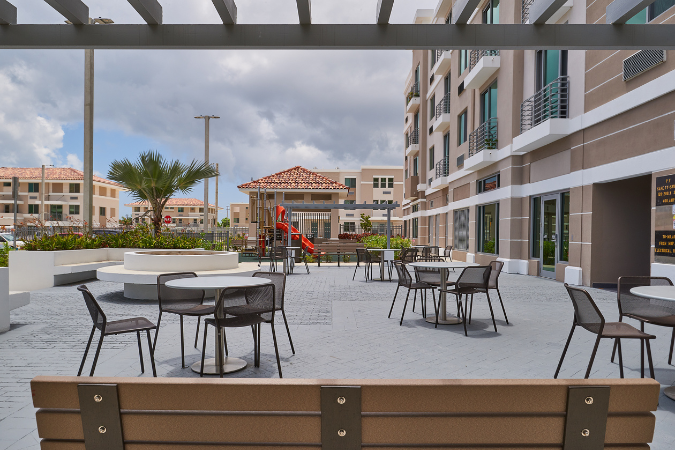5 Ways to Design Successful Multifamily Housing
Written By AD&V®ABOUT THE AUTHOR | AD&V® is dedicated to advanced and energy-efficient sustainable architecture & interior design that enhances people’s experience of the world and improves their lives.
SUCCESSFUL MULTIFAMILY HOUSING ENRICHES RESIDENTS’ LIVES AND IMPROVES CITY RESILIENCY.
Designers and developers must understand several factors to design successful multifamily housing. It’s important to provide an environment for people to live together as a community. Here are five ways to develop successful multifamily housing:
1. INVOLVE THE COMMUNITY
The first and most important part of creating successful multifamily housing is to involve the community. When you include people in conceptualizing their own spaces, you help establish and foster person-place relationships. Designers and developers need to respect, relate to, and respond to the people who will live ultimately live in the project.
They also need to remember that they will be transforming spaces and building connections, relationships, lifestyles, opportunities, and memories. They will essentially be building communities.
2. CONNECT TO PUBLIC SPACES
Locating multifamily housing near commercial spaces such as wellness centers, supermarkets, office buildings, restaurants, and stores is another important element to ensure success. These types of public spaces bring together different people, activities, and events. Having housing near these kinds of spaces activates the community and brings it to life. It allows people to be close to amenities and promotes economic growth.
Bridging the gap between people and public spaces transforms disconnected neighbors into booming human and civic networks and disorganized neighborhoods into resilient, thriving cities.
3. IMPLEMENT SUSTAINABLE METHODS
A successful multifamily housing project contributes to its community and city's resilience when it takes into account its environmental impact. Multifamily housing designed to minimize negative environmental impact through techniques such as energy-saving technology, solar panels, using sustainable materials, recycling, or repurposing supports long-term ecological balance.
Sustainable multifamily housing not only focuses on saving energy and natural resources but also on increasing the well-being of those who use those spaces, adding to their comfort, enhancing their experience, boosting their productivity, and improving the quality of their lives while simultaneously reducing demands on the environment. It’s a win-win.
4. DESIGN FOR HUMAN-SCALE
Design should always consider people. Compact structures maintain a human scale and low-density project, avoiding the need to cut down more trees and removing the need for an elevator. In our Renaissance Square affordable housing project, we replaced the existing high-rise structures and designed new affordable housing buildings to a human scale. The project was designed to be seamlessly integrated with its surrounding environment, and all buildings were grouped around a central, European-style plaza.
Overall, human-scale designs positively affect people’s perception of spaces since they are designed with people in mind making them feel that they were considered in the planning process of that space.
5. MAKE IT ACCESSIBLE
Accessibility is paramount for people to be able to connect with public spaces. Because of this, a meaningful way to create successful multifamily housing is to make them mobile accessible, and walkable. Incorporating walking paths, bike lanes, and bus stops make multifamily housing accessible for everyone.
Additionally, having pedestrian areas where people can walk encourages physical activity and improves the community’s wellness and well-being. Stimulating interaction between people and the environment generates a positive use of space and increases urban vitality. Creating multifamily housing with areas for residents or passersby to enjoy fosters a deeper connection to the space, the city, other people, and the environment.
MORE THAN JUST HOUSING
By considering the needs of residents and communities, designers, and developers can improve where and how people live. Collaborating with communities and creating meaningful spaces for people to live, work, and play will ensure multifamily housing is successful. Overall, successful multifamily housing enriches residents' lives and improves city resiliency.

